Falafel is a beloved Middle Eastern dish that has gained worldwide popularity. This nutritious recipe is made with ground chickpeas and a variety of herbs and spices, formed into balls or patties, and then deep-fried. Enjoyed as a vegetarian or vegan meal, falafel is not only delicious but also provides numerous health benefits such as being a good source of plant-based protein and dietary fiber. This dish is among the ever liked dishes in the middle east like Baklava, Knafeh, Masgou, Kebab Karz, Mansaf, Shanklish, Shawarma, etc
Introduction
Falafel has a long and fascinating history that dates back to ancient Egypt. This popular Middle Eastern dish was traditionally made with fava beans, but over time chickpeas became the preferred legume due to their milder flavor. Falafel quickly spread across the Middle East and eventually made its way to Europe and the United States, where it has become a beloved street food. Today, falafel is enjoyed as a vegetarian or vegan meal and is often served in pita bread with a variety of vegetables, sauces, and toppings.
Nutritional Facts of Falafel
Falafel is a nutritious dish that is rich in plant-based protein, dietary fiber, and essential vitamins and minerals. A typical serving of four falafel balls (100 grams) contains approximately 330 calories, 13 grams of protein, 9 grams of dietary fiber, 36 grams of carbohydrates, and 17 grams of fat. Falafel is also a good source of iron, magnesium, phosphorus, and vitamin B6. However, it’s important to be aware that falafel is often deep-fried, which can increase the calorie and fat content. To enjoy falafel in a healthier way, consider baking or air frying it instead of deep-frying, and serving it with plenty of fresh vegetables and a low-fat yogurt or tahini sauce.
Health Benefits of Falafel
Falafel is a highly nutritious dish that offers several health benefits. Here are some of them:
- High in Protein
Falafel is an excellent source of plant-based protein, making it a great alternative for those who don’t eat meat. The chickpeas used in this dish are loaded with protein, with one cup of cooked chickpeas providing about 15 grams of protein.
- Rich in Fiber
This dish is also an excellent source of dietary fiber. Chickpeas are high in both soluble and insoluble fiber, which helps to promote healthy digestion, lower cholesterol levels, and control blood sugar levels.
- Packed with Vitamins and Minerals
This dish is a great source of several essential vitamins and minerals, including vitamin C, vitamin K, folate, and iron. These nutrients help to boost the immune system, promote healthy bones, and reduce the risk of anemia.
- Low in Fat
This dish is low in fat, making it an excellent option for those looking to reduce their fat intake. One falafel patty contains only about 3 grams of fat, making it a healthy and satisfying meal option.
Recipe for Falafel
Now that you know the health benefits of falafel, let’s take a look at how to make it at home. Here is a simple and delicious recipe for this dish:
Ingredients
- 1 cup dried chickpeas
- 1/2 cup chopped onion
- 1/4 cup chopped fresh parsley
- 1/4 cup chopped fresh cilantro
- 2 cloves garlic, minced
- 1 teaspoon salt
- 1 teaspoon ground cumin
- 1/2 teaspoon ground coriander
- 1/4 teaspoon cayenne pepper
- 1/4 teaspoon black pepper
- 1/2 teaspoon baking powder
- 4-6 tablespoons of all-purpose flour
- Oil for frying
- A little quantity of tahini sauce, hummus, tzatziki sauce, chopped tomatoes, cucumbers, onions, and/or pickled vegetables for topping
Utensils required in cocking
To cook falafel, you will need several utensils. Here are some of the common utensils required for making this dish:
- Food processor: You will need a food processor to blend the chickpeas and other ingredients together to make the falafel mixture.
- Mixing bowl: You will need a mixing bowl to transfer the falafel mixture into for shaping.
- Measuring cups and spoons: You may need measuring cups and spoons to measure the ingredients accurately.
- Chef’s knife: You will need a sharp chef’s knife to chop the onions and other ingredients.
- Cutting board: You will need a cutting board to chop the onions and other ingredients.
- Baking sheet: You will need a baking sheet to place the formed falafel balls on before baking.
- Spatula: You will need a spatula to flip the falafel balls while they are baking.
- Serving dish: You will need a serving dish to transfer the cooked dish onto for serving.
Instructions
- Soak the chickpeas in water overnight or for at least 6 hours. Drain and rinse the chickpeas and put them in a food processor.
- Add the chopped onion, parsley, cilantro, garlic, salt, cumin, coriander, cayenne pepper, black pepper, and baking powder to the food processor.
- Pulse the mixture until it is finely ground but not pureed.
- Add the flour, one tablespoon at a time, until the mixture comes together and can be formed into patties.
- Heat the oil in a deep frying pan over medium-high heat.
- Form the falafel mixture into small patties and carefully drop them into the hot oil.
- Fry the falafel until they are golden brown and crispy, about 3-4 minutes per side.
- Remove the falafel from the oil and place them on a paper towel-lined plate to drain any excess oil.
- Serve hot with pita bread, hummus, and tzatziki sauce.
Cooking Precautions
Making falafel can be a bit challenging, as it requires some cooking precautions to ensure that it turns out perfectly crispy on the outside and soft and fluffy on the inside. In the following sections, we will discuss some essential tips and techniques to make delicious falafel at home.
The Importance of Preparing the Ingredients
One of the essential cooking precautions for this dish is to prepare the ingredients correctly. The quality and freshness of the ingredients can significantly affect the taste and texture of this dish. Here are some tips for preparing the ingredients:
Use Fresh and High-Quality Ingredients
It is crucial to use fresh and high-quality ingredients to make this dish. Use fresh chickpeas or fava beans, herbs, and spices. The herbs should be fresh and aromatic, and the spices should be freshly ground.
Rinse and Drain the Chickpeas or Fava Beans
Rinse the chickpeas or fava beans thoroughly and drain them well before using them. Excess water can affect the texture of the falafel and make it too dense or soggy.
Chop the Herbs and Spices Properly
Chop the herbs and spices finely to ensure that they mix well with the chickpeas or fava beans. Use a sharp knife or a food processor to chop them finely.
Soaking the Chickpeas or Fava Beans
Soaking chickpeas or fava beans is another important cooking precaution for falafel. This process softens them and makes them easier to blend. Here are some tips for soaking the beans:
Soak the Beans Overnight
Soak the beans overnight in water to soften them. Use a large bowl and cover the beans with plenty of water. The beans will double in size, so make sure that the bowl is large enough.
Drain the Beans Thoroughly
Drain the beans thoroughly before blending them. Excess water can affect the texture of the falafel and make it too dense or soggy.
The Right Proportions of Ingredients
The right proportions of ingredients are essential for making perfect falafel. Here are some tips for the right proportions of ingredients:
Use the Right Amount of Chickpeas or Fava Beans
Use the right amount of chickpeas or fava
beans, depending on the recipe you are using. Generally, a ratio of two cups of chickpeas or fava beans to one cup of herbs and spices works well.
Balance the Spices
Make sure to balance the spices, so that no single spice overpowers the others. Use cumin, coriander, and garlic powder in moderation, as they can easily overpower the falafel’s flavor.
Blending the Mixture Correctly
Blending the mixture correctly is crucial for making falafel. Here are some tips for blending the mixture correctly:
Use a Food Processor
Use a food processor to blend the ingredients, as it ensures a consistent and smooth texture. A blender may not work as well since it may create an uneven mixture.
Pulse the Mixture
Pulse the mixture instead of blending it continuously, so that it does not become too fine or too watery. Continue the pulse until the mixture is evenly ground and holds together when you press it between your fingers.
The Perfect Consistency of the Dough
The perfect consistency of the falafel dough is essential for its success. Here are some tips for achieving the perfect consistency of the dough:
Don’t Overwork the Dough
Do not overwork the dough, as this can make it too dense or tough. Mix the ingredients together gently, and don’t knead the dough.
Add a Binding Agent
Add a binding agent like flour or baking powder to help the falafel hold together. This will prevent it from falling apart when frying or baking.
Temperature and Time of Frying or Baking
Temperature and time are critical factors for frying or baking this dish. Here are some tips for temperature and time:
Use a Deep Fryer or Skillet
Use a deep fryer or skillet to fry the falafel, as it ensures that the this dish cooks evenly and quickly. The oil should be hot but not smoking, at around 350°F.
Cook Until Golden Brown
Cook the falafel until it is golden brown, which should take around three to five minutes per batch.
Bake at High Temperature
If baking falafel, bake at a high temperature, around 400°F, for around 20 to 25 minutes. Flip the falafel halfway through to ensure even cooking.
Using the Right Oil
Using the right oil for frying. Because frying is essential for making this dish. Here are some tips for using the right oil:
Use a Neutral Oil
Use a neutral oil like canola, vegetable, or peanut oil, as they have a high smoke point and do not add any flavor to the falafel.
Don’t Use Olive Oil
Do not use olive oil for frying, as it has a low smoke point and can burn quickly, making this dish bitter.
Cooling and Draining the Falafel
Cooling and draining the falafel is crucial for its success. Here are some tips for cooling and draining this dish:
Drain on Paper Towels
Drain the falafel on paper towels to remove any excess oil and to keep it crispy.
Cool Before Serving
Let it cool for a few minutes before serving, as it can be very hot when it comes out of the fryer or oven.
Serving the Falafel
Serving the falafel is an essential part of the falafel experience. Here are some tips for serving this dish:
Serve with Hummus and Salad
Serve this dish with hummus and salad, as it complements the flavors well.
Use Pita Bread
Use pita bread to wrap the falafel, as it makes for a convenient and delicious way to enjoy it.
Add Toppings
Add toppings like tahini sauce, chopped tomatoes, cucumbers, and onions to the falafel for extra flavor and texture.
Experiment with Different Sauces
Experiment with different sauces, like tzatziki, harissa, or hot sauce, to find your favorite flavor combination.
Side effects
While this dish is generally considered a healthy and nutritious food, it is important to be aware of its potential side effects.
Digestive Issues
This dish contains a high amount of fiber, which can lead to digestive issues such as bloating, gas, and constipation if consumed in large quantities. If you are not used to consuming a lot of fiber, it is best to start with a small portion of falafel and gradually increase your intake over time to avoid digestive discomfort.
High-Calorie Count
This dish is typically fried in oil, which adds a significant amount of calories to the dish. One falafel ball contains approximately 60-70 calories, so consuming multiple falafel balls or sandwiches can quickly add up to a high-calorie count. To mitigate this risk, consider baking this dish instead of frying it, or limit your portion size and pair your falafel with healthy side dishes.
High Sodium Content
Falafel is often served with salty and savory toppings like tahini sauce, pickles, and olives, which can increase the sodium content of the dish. High sodium intake can lead to health problems like high blood pressure and kidney disease, so it is important to be mindful of your sodium intake and choose low-sodium toppings or condiments whenever possible.
Allergies
this dish is made from ground chickpeas or fava beans, which are a common allergen. If you have a food allergy or sensitivity, be sure to check the ingredients of this dish or ask the restaurant or chef about the ingredients to avoid any potential allergic reactions.
Conclusion
Falafel is a delicious and nutritious dish that offers several health benefits. It is an excellent source of plant-based protein, fiber, vitamins, and minerals, and is low in fat. Making it at home is easy and requires only a few simple ingredients. Following the cooking precautions mentioned above will ensure that your dish is crispy, delicious, and healthy.
Cooking this dish requires some precautions to ensure that it turns out delicious and crispy. Follow the tips and tricks outlined in this article to make sure that your falafel is a success. Remember to balance the spices, blend the mixture correctly, achieve the perfect consistency of the dough, fry or bake at the right temperature and time, use the right oil, and cool and drain it properly. With these precautions in mind, you can enjoy a delicious and satisfying falafel experience.
FAQs
Can I freeze falafel?
Yes, you can freeze it before frying or baking it. Freeze the its balls on a baking sheet, and then transfer them to a freezer-safe container once they are frozen. Thaw them in the refrigerator before frying or baking.
What is the difference between falafel and fritters?
It is a Middle Eastern dish made with ground chickpeas or fava beans, while fritters are made with a batter of flour, eggs, and vegetables.
Can I still eat falafel if I have a gluten intolerance?
It is naturally gluten-free, but it is important to make sure that it is not cross-contaminated with gluten during preparation. Be sure to ask the restaurant or chef about their preparation methods and ingredients to avoid any potential gluten exposure.
How can I make falafel healthier?
You can make it healthier by baking it instead of frying it, using whole-grain pita bread or wraps, choosing low-sodium toppings, and pairing it with fresh vegetables or a side salad
Can I make falafel without a food processor?
Yes, you can make it without a food processor, but it may not have the same consistency as it is made with a food processor. You can use a mortar and pestle or a blender to grind the ingredients, or you can chop them finely by hand.
Can I freeze falafel?
Yes, you can freeze it. To freeze, place the cooked falafel patties in an airtight container or freezer bag and store them in the freezer for up to 3 months. To reheat, bake in the oven at 375°F for 10-12 minutes.
What are some common toppings for falafel?
Common toppings for it include tahini sauce, hummus, tzatziki sauce, chopped tomatoes, cucumbers, onions, and pickled vegetables.
References
- “The Arabian Nights Cookbook: From Lamb Kebabs to Baba Ghanouj, Delicious Homestyle Arabian Cooking” by Habeeb Salloum.
- “Arabian Delights: Recipes & Princely Entertaining Ideas from the Arabian Peninsula” by Amy Riolo.
- “The Complete Middle Eastern Cookbook” by Tess Mallos.
- “Classic Lebanese Cuisine: 170 Fresh and Healthy Mediterranean Favorites” by Kamal Al-Faqih.
- “The Food of Oman: Recipes and Stories from the Gateway to Arabia” by Felicia Campbell.
- “The Lebanese Kitchen: Quick and Healthy Recipes” by Monique Bassila Zaarour.
- “Persiana: Recipes from the Middle East & Beyond” by Sabrina Ghayour.
- “The Jewelled Kitchen: A Stunning Collection of Lebanese, Moroccan and Persian Recipes” by Bethany Kehdy.
- “Saha: A Chef’s Journey Through Lebanon and Syria” by Greg Malouf.
- “The New Middle Eastern Vegetarian: Modern Recipes from Veggiestan” by Sally Butcher.
- https://en.wikipedia.org/wiki/Falafel
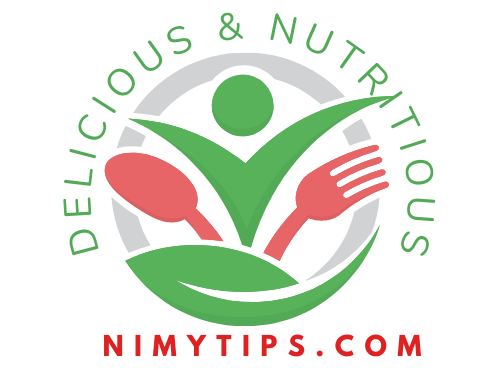


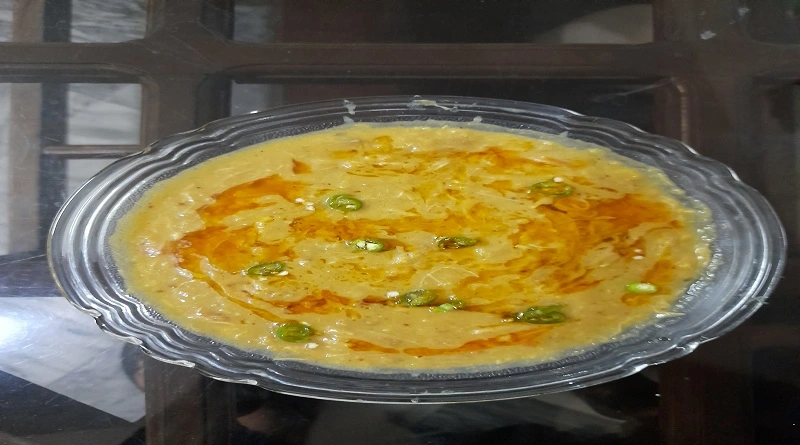
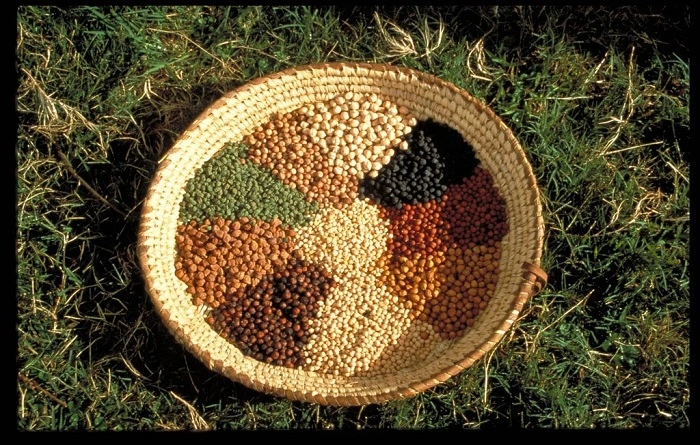

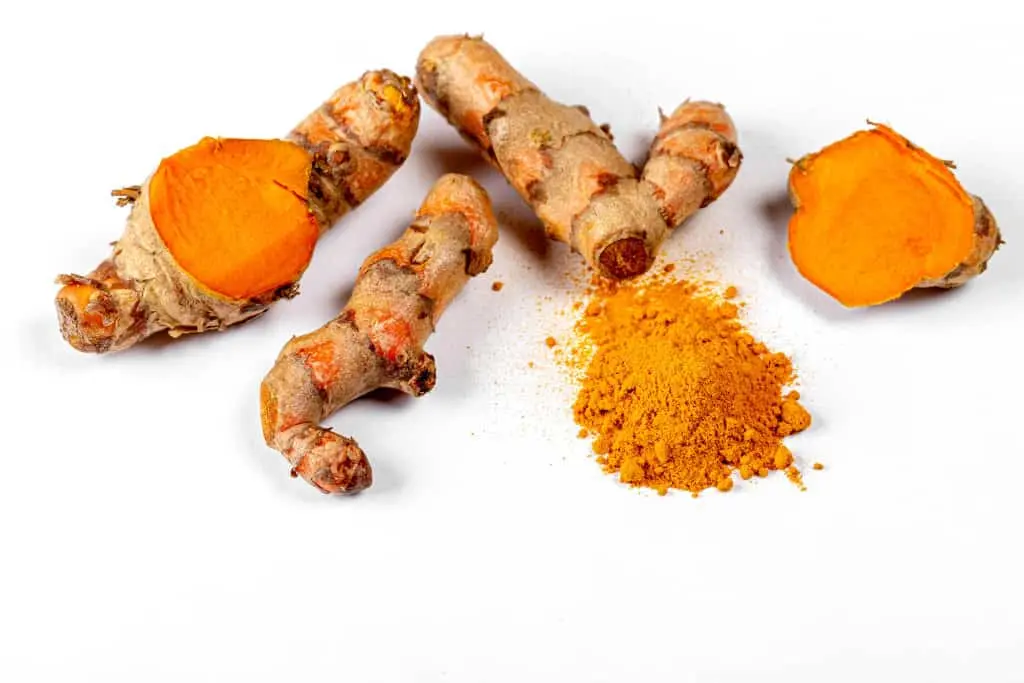

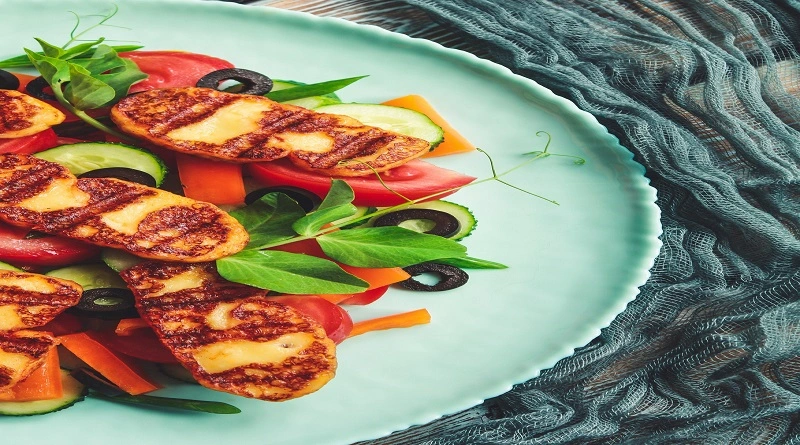
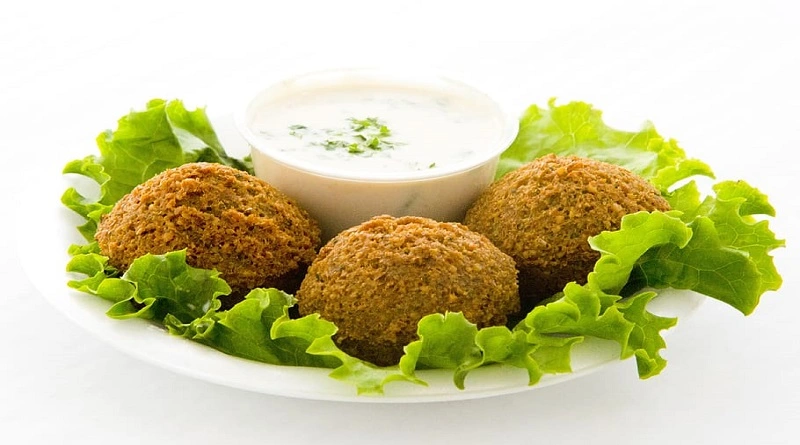
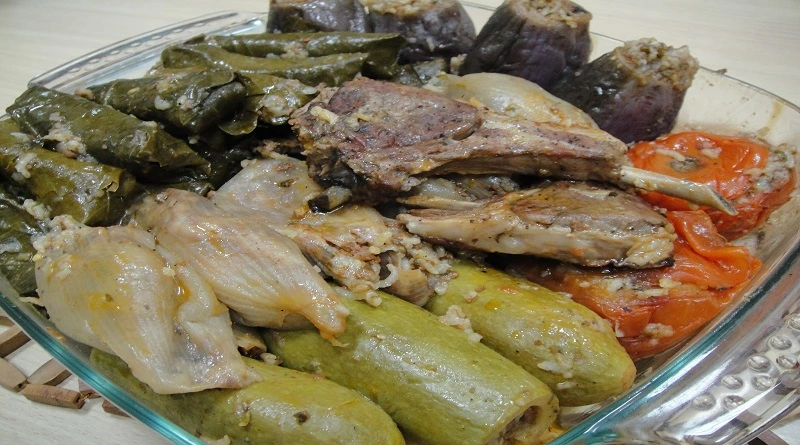
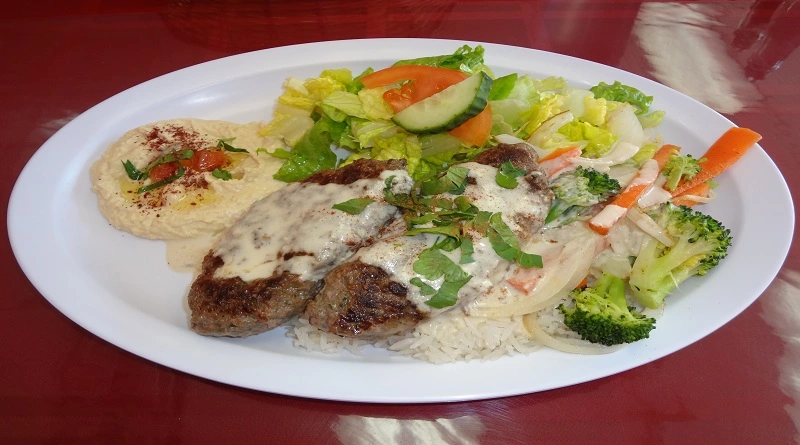


I may need your help. I tried many ways but couldn’t solve it, but after reading your article, I think you have a way to help me. I’m looking forward for your reply. Thanks.
yes of course you may ask any of questions on the article